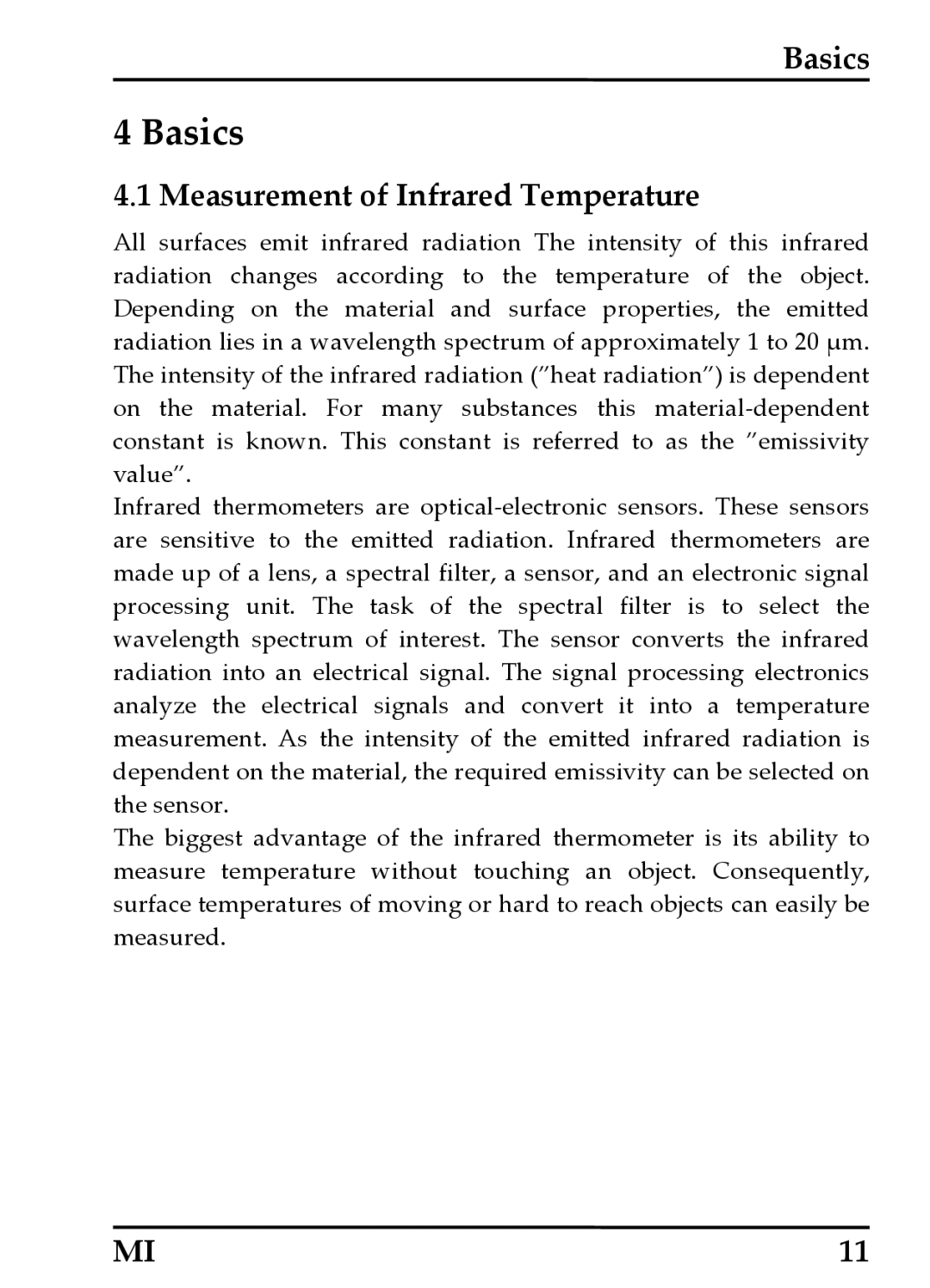
Basics
4 Basics
4.1 Measurement of Infrared Temperature
All surfaces emit infrared radiation The intensity of this infrared radiation changes according to the temperature of the object. Depending on the material and surface properties, the emitted radiation lies in a wavelength spectrum of approximately 1 to 20 μm. The intensity of the infrared radiation (”heat radiation”) is dependent on the material. For many substances this material‐dependent constant is known. This constant is referred to as the ”emissivity value”.
Infrared thermometers are optical‐electronic sensors. These sensors are sensitive to the emitted radiation. Infrared thermometers are made up of a lens, a spectral filter, a sensor, and an electronic signal processing unit. The task of the spectral filter is to select the wavelength spectrum of interest. The sensor converts the infrared radiation into an electrical signal. The signal processing electronics analyze the electrical signals and convert it into a temperature measurement. As the intensity of the emitted infrared radiation is dependent on the material, the required emissivity can be selected on the sensor.
The biggest advantage of the infrared thermometer is its ability to measure temperature without touching an object. Consequently, surface temperatures of moving or hard to reach objects can easily be measured.
MI | 11 |
